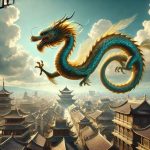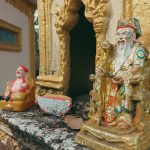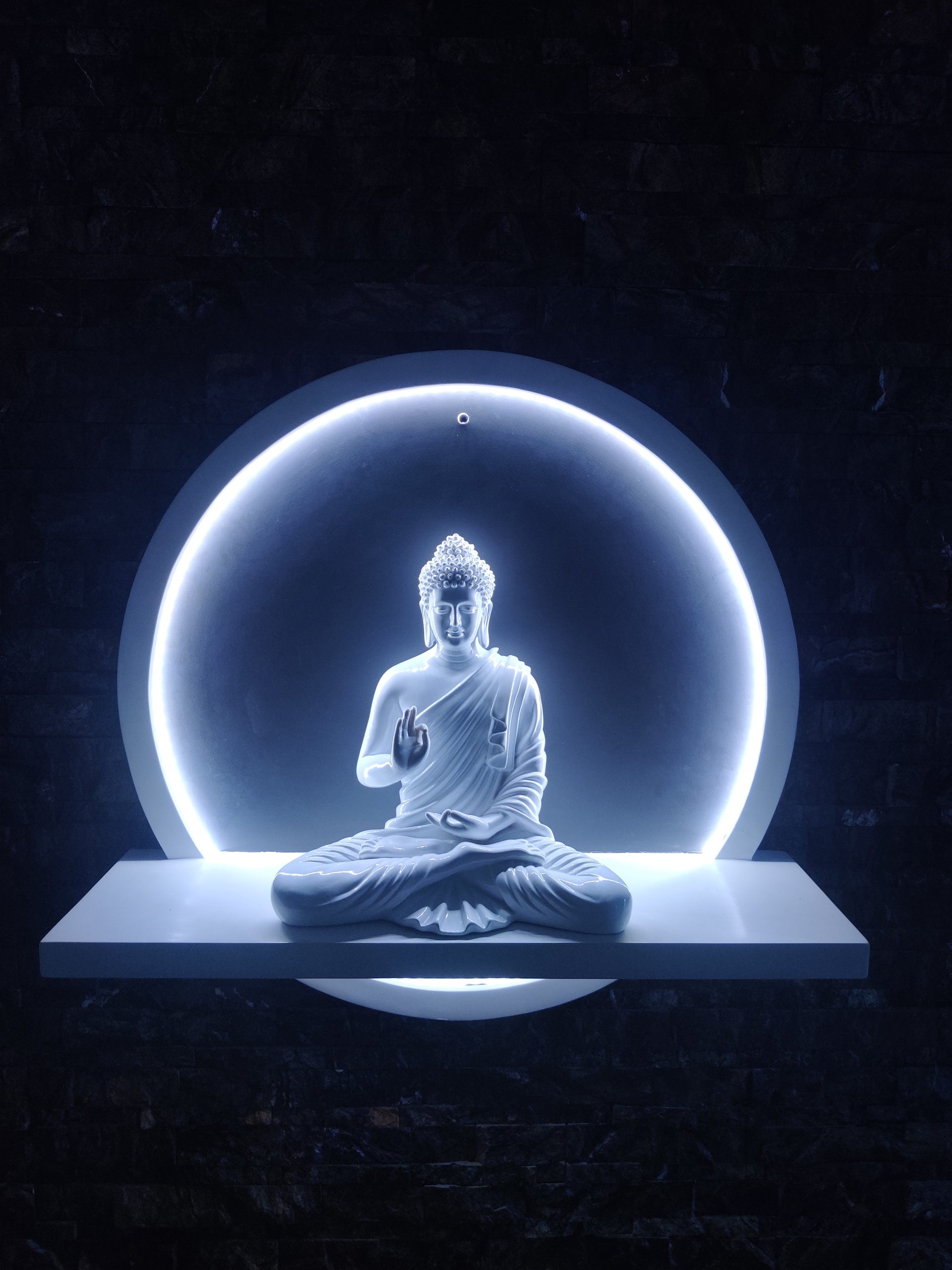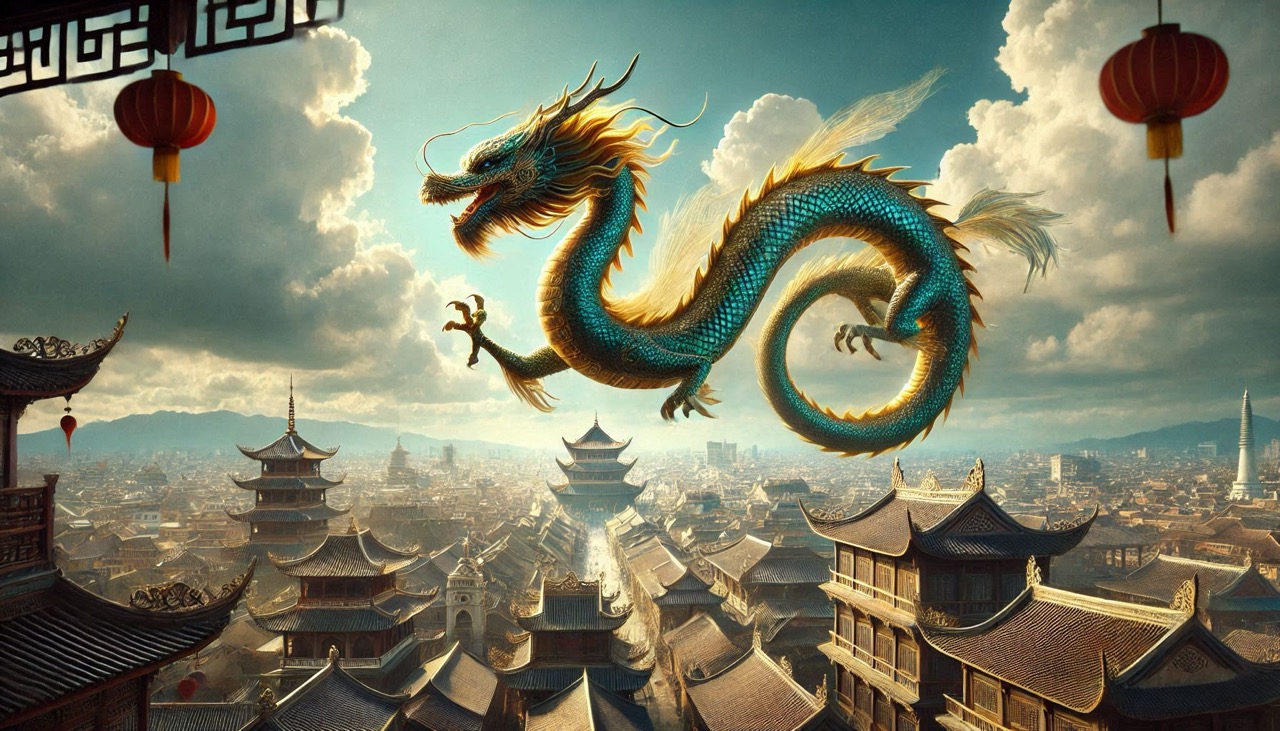The 奈何桥 (Naihe Bridge) is a concept from Chinese mythology and is often associated with the afterlife. According to traditional Chinese beliefs, after death, the souls of the deceased must cross the Naihe Bridge before they can enter the underworld or proceed to reincarnation. The bridge is said to be guarded by various deities, spirits, or demons, depending on the narrative or source.
The crossing of the Naihe Bridge is thought to be a test of the individual’s virtue. In some accounts, the bridge is described as being very narrow for the wicked, making their crossing difficult, while for the virtuous, the bridge appears broad and safe.
Once crossed, the soul meets the deity Yanluo Wang (also known as Yama in Indian religions), the King of Hell, who judges the soul and sends it to its appropriate destination. Often associated with this journey is the offering of a drink of Meng Po soup or tea, which causes the soul to forget its previous life before reincarnation.
This concept reflects the moral theme of retributive justice common in many cultures’ views of the afterlife, where one’s actions in life determine their fate after death.
轮回
The Chinese term “轮回” translates to “reincarnation” in English. It refers to the philosophical or religious concept that the soul or spirit, after biological death, begins a new life in a new body that may be human, animal, or spiritual depending on the moral quality of the previous life’s actions.
In Chinese Buddhism, 轮回 (lunhui) refers to the concept of samsara, the cycle of birth, death, and rebirth that living beings are said to undergo repeatedly. It encompasses the idea that individuals go through a series of lifetimes as various forms of life, which could be human, animal, or other beings in different realms of existence, depending on their karma. Karma, in this context, refers to the actions in previous lives that determine the conditions of the current life and the future rebirths.
The ultimate goal in Buddhism is to escape from the cycle of 轮回 (lunhui) through enlightenment, which leads to nirvana — a state of liberation and freedom from suffering. The teachings of the Buddha provide a path to end this cycle by eliminating ignorance and desires, which are seen as the root causes of suffering.
孟婆汤 (Meng Po’s Soup)
In Chinese mythology, people who drink 孟婆汤 (Meng Po Tang), also known as “Meng Po’s soup” or “soup of oblivion,” are said to forget their past lives. This soup is offered to the souls of the dead just before they are reincarnated. According to the myth, after the souls of the deceased have been judged by Yanluo Wang, the King of Hell, and before they cross over the Naihe Bridge to be reborn into the next life, Meng Po serves them this brew.
The act of drinking Meng Po Tang ensures that souls do not remember their previous existence, any of their past wrongdoings, or anything related to their former lives. This process of forgetting is necessary to begin a new life without the burdens of the past according to the beliefs associated with this myth.
Meng Po herself is often depicted as an old woman, and the act of serving the soup is part of the cycle of life and death that maintains the balance of the cosmos in Chinese mythology and belief systems that incorporate the concept of reincarnation.
Did We All Drink Meng Po Tang Before Our Current Lives?
The idea that we all drank Meng Po Tang before our current lives is part of Chinese mythology and is not a concept universally accepted by all cultures or belief systems. In the context of that mythology, it would be thought that every soul reincarnated on Earth has no memory of past lives due to the effects of Meng Po Tang.
In many Eastern philosophies and religions, such as Buddhism and Taoism, the cycle of rebirth is a foundational concept, but beliefs about the specifics can vary widely. The idea of a “soup of forgetfulness” is unique to Chinese myth and is not a literal belief held by all people who subscribe to the concept of reincarnation.
Outside of this mythology, perspectives on past lives and the afterlife differ greatly around the world. Some people believe in reincarnation and the transmigration of souls, some believe in a single lifetime with different forms of afterlife, and others believe in no continuation after death at all.
Therefore, whether we have all consumed Meng Po Tang before our current lives is a matter of personal or cultural belief, rather than an empirically verifiable fact.
Parallels With Western Myths
The Naihe Bridge (奈何桥) in Chinese mythology and the River Styx in Greek mythology are both symbolic features of their respective cultures’ underworlds, but they represent different traditions and narratives about the afterlife.
Naihe Bridge: As previously mentioned, in Chinese mythology, the Naihe Bridge is a structure that souls must cross to enter the realm of the dead and proceed towards reincarnation. It is often depicted as a testing point where the nature of the crossing changes based on the deeds of the individual in life. Meng Po, the old woman, serves the soup that makes the souls forget their past lives at this bridge.
River Styx: In Greek mythology, the River Styx is one of the rivers in the underworld and serves as the boundary between the world of the living and the realm of the dead. Souls of the deceased are ferried across the river by Charon, the ferryman, provided they have a coin to pay for passage. Those who cannot pay are said to wander the shores for a hundred years. The Styx also plays a role in the pantheon of Greek gods as an object of sacred oaths; the gods swear by the river Styx, and breaking an oath sworn on it was considered an act with severe consequences.
Both the Naihe Bridge and the River Styx serve as transitional points between life and the afterlife, but their functions and the stories surrounding them reflect the unique cultural and religious perspectives of their respective civilizations. They are symbolic of the journey after death, albeit with different rituals, deities, and outcomes involved. The concept of having a passage or a barrier that the dead must traverse to reach the afterlife is a common motif in many mythologies around the world, which underlines a shared human preoccupation with death and what lies beyond.
River Styx Comparison
The Naihe Bridge and the River Styx are similar in that they both act as thresholds between the world of the living and the afterlife. Souls in both myths must cross these boundaries to reach the afterlife. The crossing is a final rite of passage after death, symbolizing the soul’s leaving the mortal world and entering the realm of the dead.
The differences, however, reflect their distinct cultural origins. The Naihe Bridge is part of Chinese mythology and is specifically related to the idea of reincarnation. The bridge leads to judgment and subsequent reincarnation, with the crossing moderated by the offering of Meng Po’s soup which induces forgetfulness of previous lives.
The River Styx, from Greek mythology, does not lead to reincarnation but to a final resting place of the soul in the underworld. It is a river that must be crossed, often with the help of the ferryman Charon, and it is associated with a permanent afterlife rather than a cyclical one. The act of crossing the Styx does not involve forgetfulness but rather represents the irrevocability of death; once crossed, the return to the land of the living is not generally a part of the soul’s journey.
In essence, while both mythological features serve as transition points after death, the Naihe Bridge is associated with an ongoing cycle of life, death, and rebirth, while the River Styx is more typically associated with a one-way journey to a final destination in the underworld.
The Importance Of Cultural Myths When Learning Languages
Learning myths is important for learning languages because myths are woven into the fabric of language and culture. They carry with them the history, values, beliefs, and the philosophical underpinnings of a society. When you learn the myths associated with a language, you’re delving deeper into the way people think and express themselves within that culture.
Myths influence idioms, proverbs, and expressions that are common in everyday language, and understanding these can lead to a richer and more nuanced use of the language. They also appear in literature, film, and other forms of media that you might engage with to improve your language skills. By understanding the stories and their significance, you can better grasp the subtleties and deeper meanings behind what is being said. Furthermore, myths often embody the linguistic rhythms, structures, and poetic devices of a language, which can enhance your appreciation and mastery of it.
In essence, engaging with myths is engaging with the heart of a language, not just its structure or vocabulary, but its very essence as shaped by centuries of cultural development.
The Concept Of 密不可分
Language and culture are indeed 密不可分 (mì bù kě fēn), which translates to “inseparable” in English. Language is a fundamental aspect of culture, and it both reflects and shapes cultural identity. Through language, cultural beliefs, practices, and shared values are communicated and passed down through generations. Similarly, cultural context can give meaning to the language, influencing how it is spoken and understood. Thus, understanding a language thoroughly often involves engaging with the cultural context in which it exists.
Conclusion
Learning about 轮回, or reincarnation, while studying Chinese offers non-spiritual learners valuable cultural insights. It exposes them to the traditional Chinese perspectives on life, death, and morality, which are woven into the language’s proverbs, literary works, and even everyday speech. This understanding can deepen their appreciation of Chinese texts and social interactions, allowing for more meaningful engagement with native speakers and a fuller experience of the language in its cultural context. Essentially, understanding concepts like 轮回 can enhance one’s linguistic competence and cultural literacy, essential components of true language proficiency.
Learning about 轮回 (lunhui) can indeed be important for people who want to learn Chinese, even if the concept itself is of a religious or philosophical nature. The reasons are multifaceted and largely cultural.
Firstly, understanding lunhui and other such concepts can offer deeper insights into Chinese literature, poetry, and film, where these ideas might be referenced either directly or metaphorically. The themes of birth, death, and rebirth are prevalent in many cultural artifacts and can inform character motivations and story arcs.
Secondly, the idea of 轮回 is interwoven with language expressions and idioms that native speakers might use in daily conversation. Such expressions may not translate directly into English or other languages but carry significant meaning when understood in the cultural context.
Moreover, in a broader educational sense, when you learn about the fundamental beliefs of a culture, you gain a more nuanced perspective of its people’s worldview. This can enhance communication and help in bridging cultural gaps. It shows respect for the culture and can open up richer dialogues with native speakers who may appreciate the interest in their traditions and beliefs.
In sum, while not directly related to the mechanics of language learning (like grammar or vocabulary), understanding key cultural concepts like 轮回 can enrich the experience of learning Chinese and provide a more holistic grasp of both the language and the culture.










